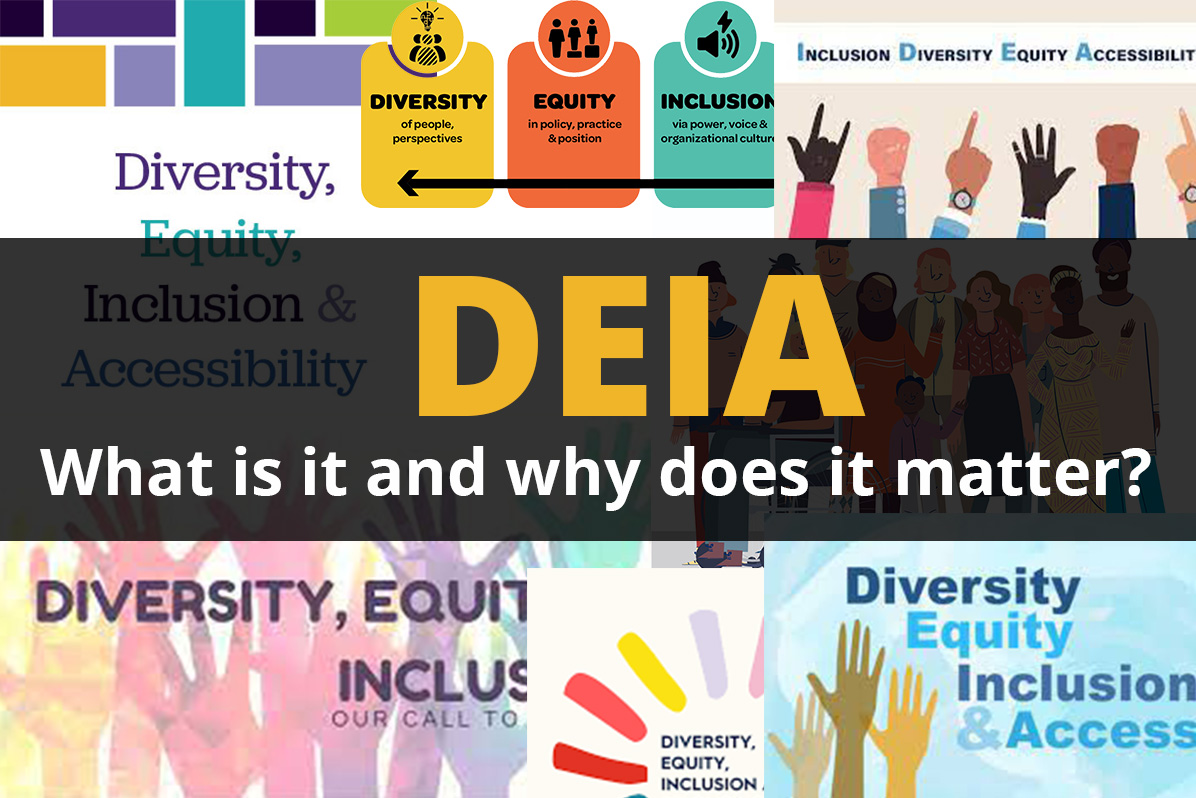DEIA – What is it and why does it matter?
If you’re in HR, you probably know DEIA and have your own answers. If not, you may have heard the acronym and assume it’s a new government program requirement driven by the “woke” left. This isn’t new! Some of us are old enough to have been schooled on discrimination and sexual harassment decades ago. While those were legal initiatives, most leaders at the time responded because it was the right thing to do or didn’t want to get in trouble. I don’t recall anyone making the business case (although I’m sure there were some).What is it?
DEIA stands for Diversity, Equity, Inclusion and Accessibility. The definitions below are as written in the Government-wide Strategic Plan to Advance Diversity, Equity, Inclusion, and Accessibility in the Federal Workforce.
| Diversity | The practice of including the many communities, identities, races, ethnicities, backgrounds, abilities, cultures, and beliefs of the American people, including underserved communities. |
| Equity | The consistent and systematic fair, just, and impartial treatment of all individuals, including individuals who belong to underserved communities that have been denied such treatment. |
| Inclusion | The recognition, appreciation, and use of the talents and skills of employees of all backgrounds. |
| Accessibility | The design, construction, development, and maintenance of facilities, information and communication technology, programs, and services so that all people, including people with disabilities, can fully and independently use them. Accessibility includes the provision of accommodations and modifications to ensure equal access to employment and participation in activities for people with disabilities, the reduction or elimination of physical and attitudinal barriers to equitable opportunities, a commitment to ensuring that people with disabilities can independently access every outward-facing and internal activity or electronic space, and the pursuit of best practices such as universal design. |
Why does it matter?
In the federal government, the why is best captured in this statement from the Strategic Plan, our country is “at its strongest when our Nation’s workforce reflects the communities it serves”. For your organization, you will be most successful when your talent and leadership most closely reflect the customers you serve and the communities from which you recruit. This is true regardless of where you operate in the world.
The evidence is in the business headlines today as more research is published on the Great Resignation. I wrote about this in my last post. After pay, the top reasons for quitting or thinking about it over the next twelve months, are issues at the heart of DEIA. And the numbers get worse for younger, women and minority workers.
Addressing these issues and building your reputation as a diverse and inclusive organization will help you compete for talent, now and in the future. These are the demographics you need to attract to be competitive. The characteristics of an organization with a strong DEIA culture are what the best talent looks like and looks for.
Think you can ignore this because you don’t need to hire anyone right now?
Think again. Multiple studies have confirmed 20% to 40% of your workforce is thinking about quitting within the next 12 months. Turnover is expensive. Good DEIA is good business. DEIA programs are cost effective, and the expertise is available from SHRM, it’s certified professionals and other organizations. Progressive companies are already well along with these programs and can share their experience.
Your first step is to find out what’s going on in your organization.
Whether your biggest problem is attrition, hiring, resiliency, training or knowledge transfer, you’ll need to get the facts. Our mission is to help your leadership and HR team fill the gaps in your talent intelligence, support your decision process with facts and deploy the intelligence processes to measure the results.
We’re motivated by the opportunity to help our clients “do the right thing” while creating competitive advantage in the retention and competition for talent. We will continue to post on our research and lessons from our discussions with those at the leading edge. And please share your thoughts!


